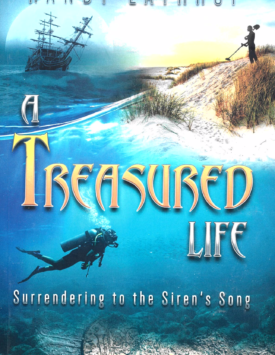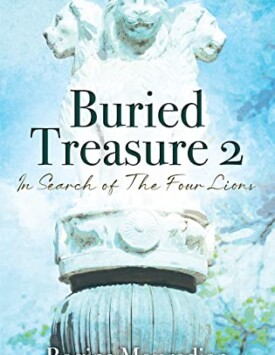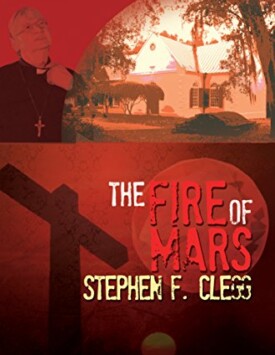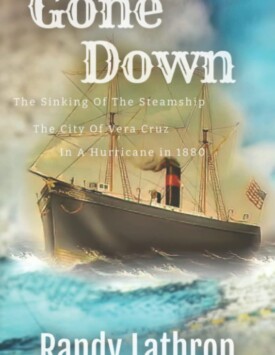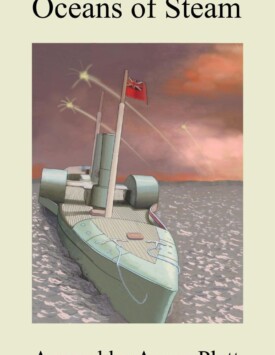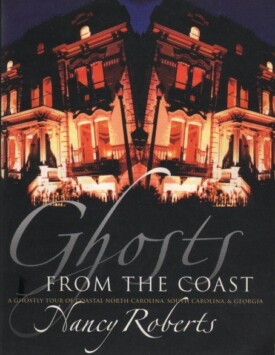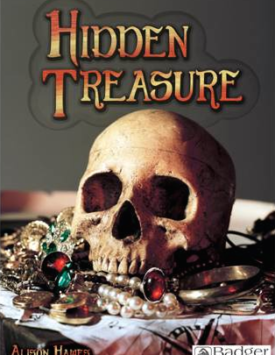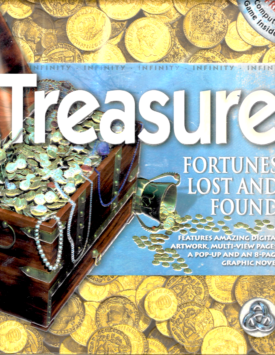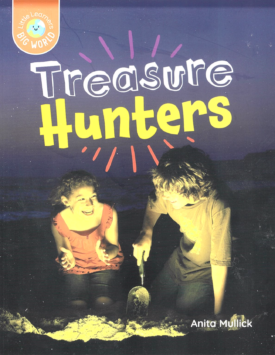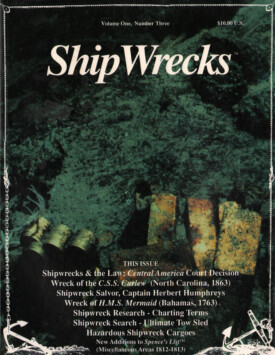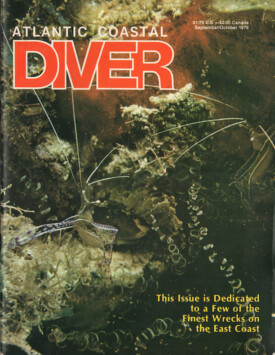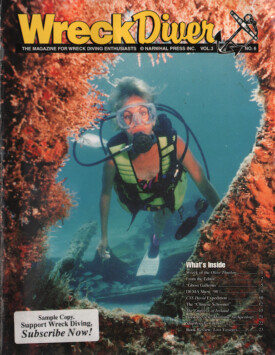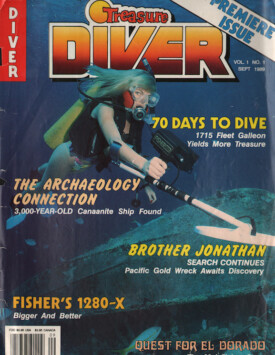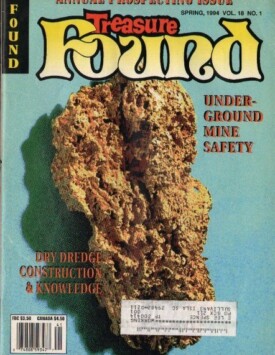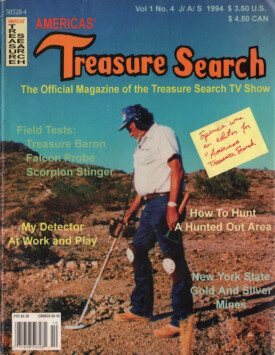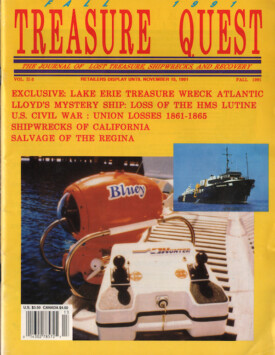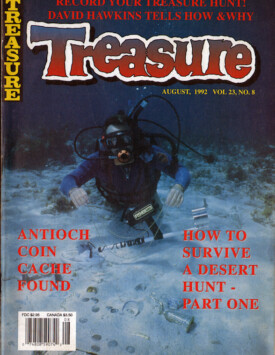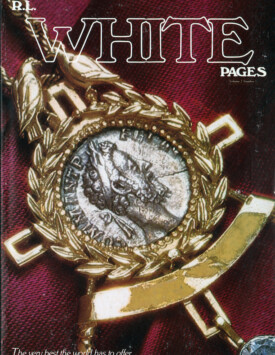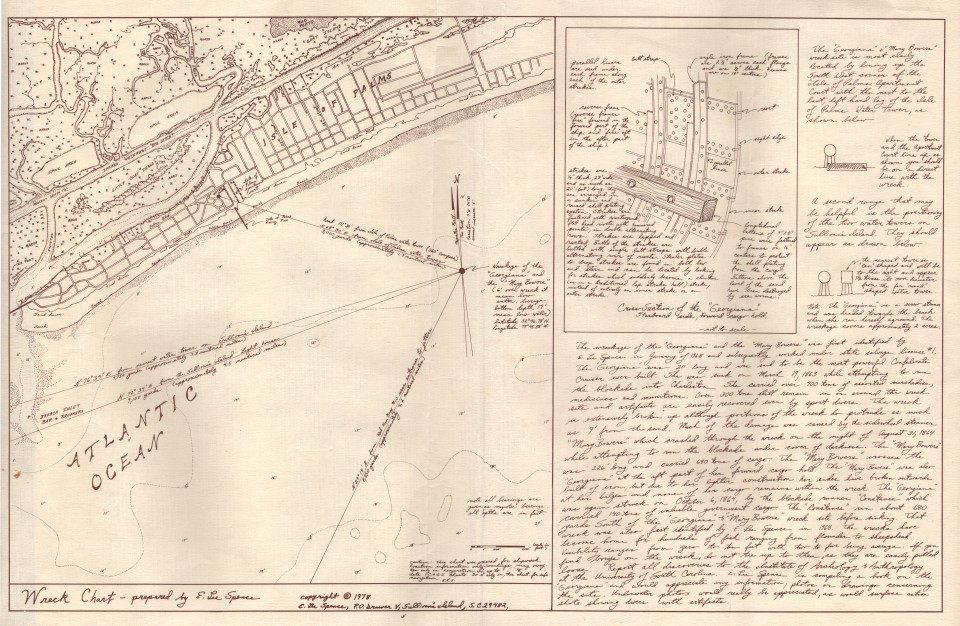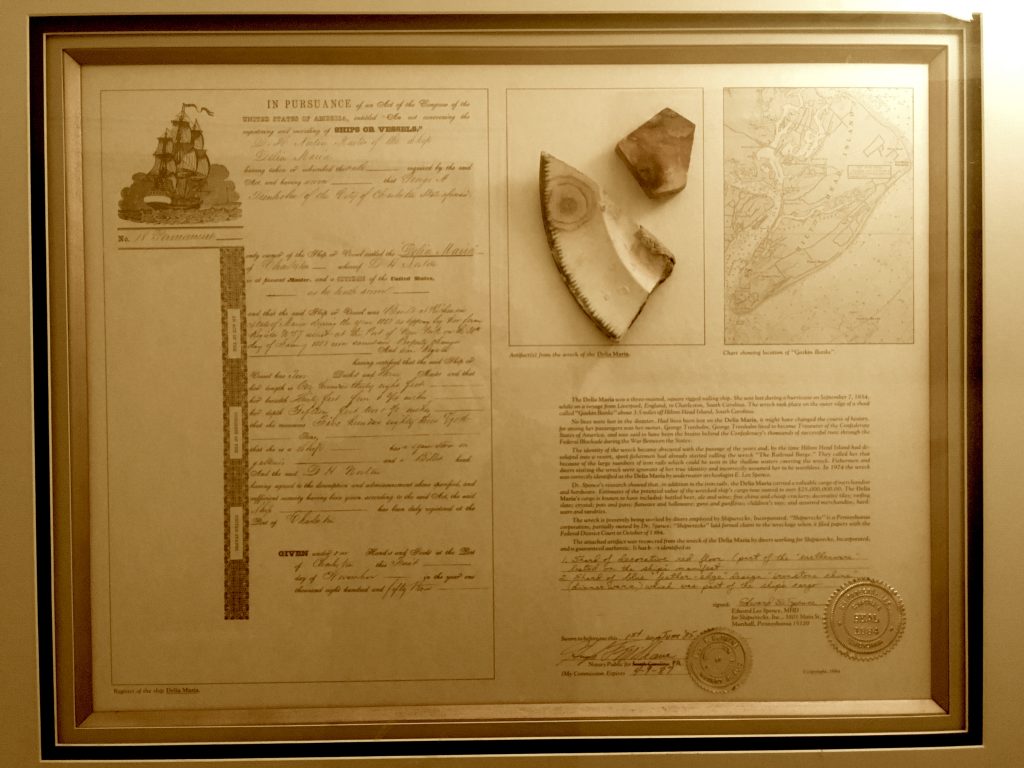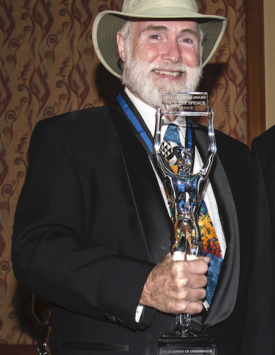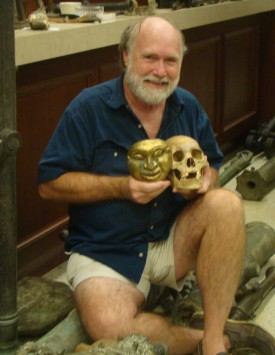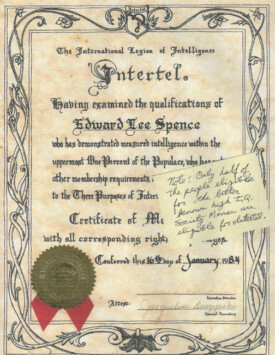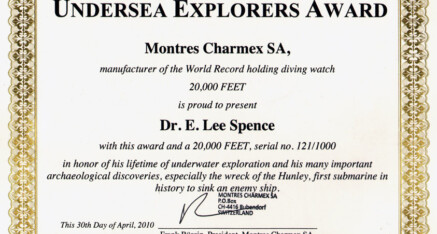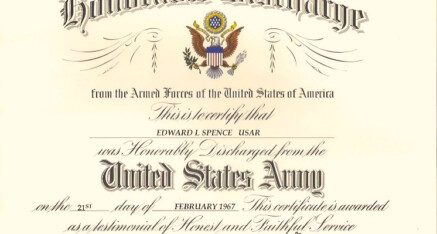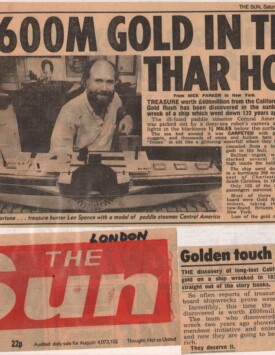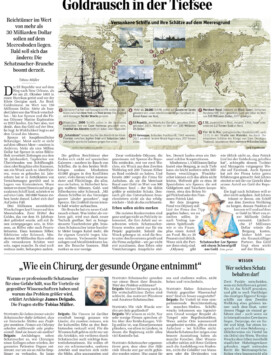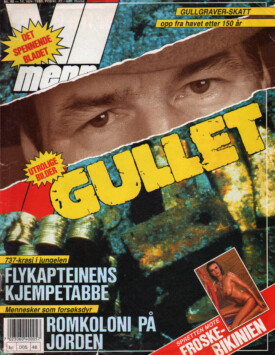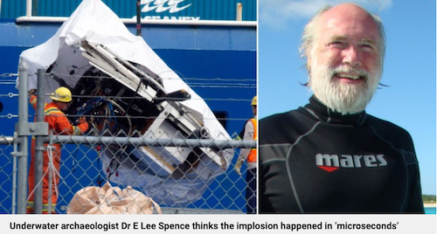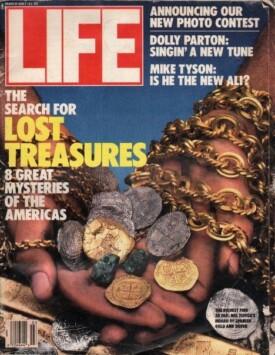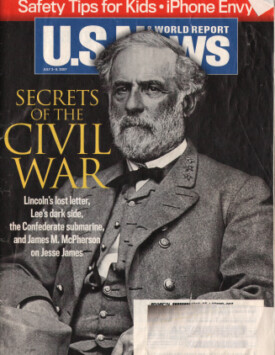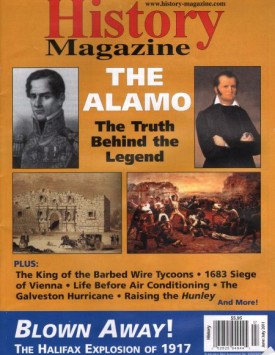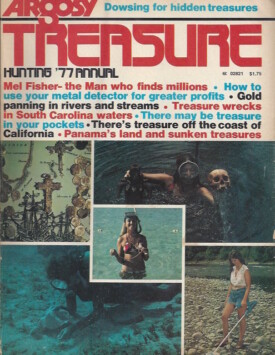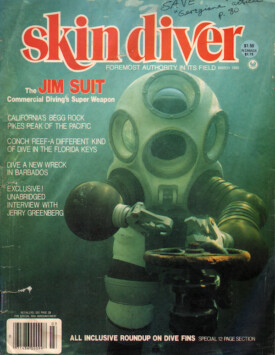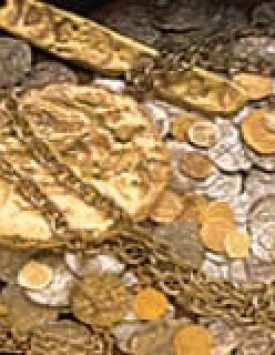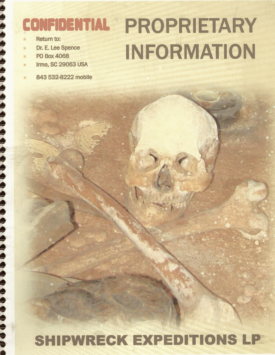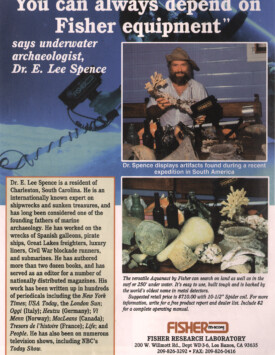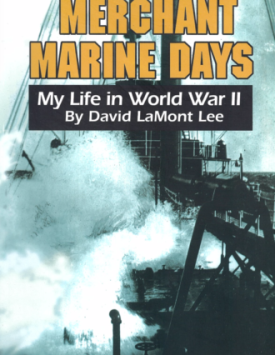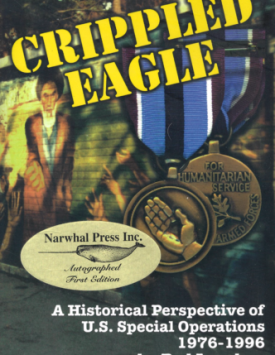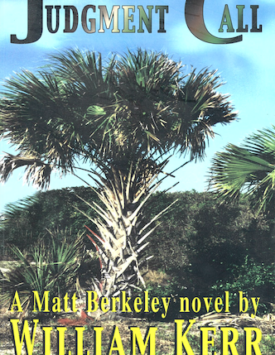Dr. E. Lee Spence — Underwater Archaeologist, Shipwreck Historian, Treasure Hunter, Author, Editor, & Award-Winning Diver & Cartographer
Click on images throughout this page to see, hear, and read more!
Spurred on by childhood tales of pirates and adventure, Dr. E. Lee Spence, who has Asperger’s Syndrome and a genius IQ, designed and built his own diving gear and found his first shipwrecks the year he was twelve. That was 1959-1960. He has since found hundreds more wrecks and has worked on everything from Spanish galleons and pirate ships to Civil War blockade runners and twentieth century freighters. He remembers the exciting dreams of his youth and is still making them come true. One of those dreams was eating off the dinner plates and drinking wine recovered from the shipwrecks. Another was finding gold and silver coins, cannons and swords. He has lived all of those dreams and lots more.
****
Vice magazine described Spence as “a pioneer in the field of underwater archaeology, a world-renowned treasure hunter, and just about as close to an actual living, breathing Nathan Drake (in the Uncharted gaming series) as you’re ever going to find.” Some think he is the “real Dirk Pitt” (the protagonist of the Clive Cussler novels). Others refer to him as the “Indiana Jones of the Sea.” A friend nicknamed him “Oceana Jones”, but he prefers “HunleyFinder” or just “Lee.” Spence is @ShipwrecksGuru on Twitter.
****
The photo to the right shows Dr. Spence with a 22-carat gold sword handle made in the shape of the Hindu god Ganesh, weighing over a kilo, and studded with rubies and sapphires. It is thought to have belonged to a series of “pirate kings.”
Dr. Spence is an internationally known expert on shipwrecks and sunken treasures. His bachelor of Arts in Interdisciplinary Studies was the first accredited academic degree ever awarded in the United States for a program in marine archaeology. He also received one of the first five doctorates (Doctor of Marine Histories, College of Marine Arts, 1972) ever awarded for marine archaeology anywhere in the world and he has long been considered one of the founding fathers of marine archaeology. (Note: Like many newly created degrees when they first start out there was no process in place for degree to be accredited, but that was not then required and the many discoveries, writings and other accomplishments of each of recipients speaks for itself.)
His work has been funded by such institutions as the Savannah Ships of the Sea Museum, CRIL (the Caribbean Research Institute Ltd., Colombia, South America), the College of Charleston, the South Carolina Committee for the Humanities, and the National Endowment for the Humanities. In the early 1990s he served as Chief of Underwater Archaeology for Providencia Y San Andres, a 40,000 square mile archipelago in the Western Caribbean. He has authored more than two dozen books, and has served as an editor for a number of nationally distributed magazines. He is also an award winning cartographer and has published a number of maps and charts dealing with shipwrecks and treasure.
Always an adventurer, Spence has traveled to a wide range of exotic places in the Far East, Europe, Central and South America. He has explored castles, palaces, shipwrecks, ancient ruins, secret tunnels, and subterranean and underwater caves. He has dived in the Great Lakes, the Atlantic, the Pacific, the Mediterranean, and the Caribbean.
He has been shot at, buried in cave-ins, tangled in fishing nets, pinned under wreckage, run out of air, lost inside a wreck, and bitten by fish while pursuing his quests.
Although Dr. Spence has discovered numerous historically significant shipwrecks, including the Civil War blockade runner Georgiana and the Confederate submarine Hunley, he hasn’t only made discoveries underwater. He considers his identification of Charleston born banking and shipping magnate George Trenholm as the “Real Rhett Butler” to have been his most interesting non-shipwreck discovery. Trenholm’s fleet of fast steamers earned today’s equivalent of over one billion dollars running munitions, medicines, and merchandise through the Federal blockade. By the end of the Civil War, Trenholm was a major figure in the Confederate government. The United States actually charged Trenholm with treason and claimed he had made off with and concealed hundreds of millions in Confederate assets. Trenholm died without revealing his secrets. Spence is currently trying to uncover them.
The State of South Carolina’s claim of ownership to the Civil War submarine Hunley was based on Spence’s 1970 discovery of that vessel and his subsequent gift of his salvage rights to it to the State. Spence’s gift of his rights was made in September of 1995 at the official request of the Attorney General of South Carolina and the South Carolina Hunley Commission.
In 2013, Dr. Spence announced his positive identification of the 1894 wreck of the smuggling ship SS Ozama, which he had previously discovered discovery off Cape Romain, South Carolina. The news trended on Yahoo. Later that year he announced his identification of still another wreck that he had discovered off Cape Romain as the 1881 wreck of the SS United States.
As an historian, Spence believes the biggest key to success on any expedition is the archival research that precedes it. Spence calls historical research “his drug of choice” and says, “In today’s world, time is the most expensive part of a salvage expedition. Man-hours spent in the archives can cut hundreds of thousands of dollars worth of time from the field phase of most projects.”
Read more about Dr. Spence on Wikipedia. Note: Because of Spence’s many discoveries, Spence is actually on numerous pages in Wikipedia, and not just the main page about his life.
Video: Dr. E. Lee Spence, Underwater Archaeologist: — This video was prepared by Christian Chamberlain for presentation before the Academy of Underwater Arts & Sciences for the occasion of Spence receiving a NOGI and being made a fellow of that institution.
- 2023- Profiled in Oct. issue of Mensa World Journal
- 2013- Honored with the 2012-2013 NOGI in science
- 2010- Undersea Explorers Award (Montres Charmex SA)
- 2010- International Who’s Who of Diving (Diving Almanac)
- 2009- Honorarium, National Geographic
- 2002- Commendation by Community Pride, Inc.
- 1998- Who’s Who in South & South West
- 1997- Who’s Who in America
- 1996- Who’s Who in Finance & Industry
- 1992- Chief of Underwater Archaeology, Providencia
- 1991- Mark of Excellence, Beneath the Sea
- 1983- Grant, South Carolina Committee for Humanities, shipwrecks study
- 1983- Grant, National Endowment of the Humanities
- 1983- Grant, Ships of the Sea Museum
- 1976- Donald O. Bushman Cartography Award by University of South Carolina
- 1971- Grant, Contemporary University, University of South Carolina
- 1971- Honors Program University of South Carolina
- 1967- Honorable Discharge United States Army
- 1966- Honors Program University of Miami
- 1966- National Honors Scholarship University of Miami
- 1966- Reserve Officer Training Corps 4-year scholarship
- 1966- appointment to Merchant Marine Academy
- 1966- alternate appointment to United States Naval Academy
- 1966- alternate appointment to West Point, United States Military Academy
- 1966- First Prize Science Fair, underwater inflatable house
- 1965- National Science Foundation Scholarship
- 1960- National Educational Development Test Certificate of Merit
These are just a few of the numerous interviews and appearances on TV and radio that Spence has done over the years. The ones included here were selected solely because there are links to them on the internet. Some interviews that Spence would have liked to include, such as when Jane Pawley interviewed Spence on NBC’s Today Show in the late 1980s, and an episode on a life-style TV series hosted by Carmen Electra, in which Spence found a previously undiscovered Confederate steamer, as well as various interviews in different years on British Broadcasting Company (Radio), Canadian Broadcasting Company, and other major networks that Spence has been unable to locate or obtain a copy.
A&E Treasure: “The Search for the lost Confederate Gold” includes interview and video of Spence at one of the sites where he believes some of the gold was hidden
Weather Channel: Dr. E. Lee Spence was a featured guest on Weather channel’s new TV series Search Party with Brandon Jordan (this was a promo for this episode)
Travel Channel: “Mysteries at the Museum” includes account of Spence’s discovery of the wrecked Civil War blockade-runner Georgiana & its ties to the “real Rhett Butler”
WIS TV (NBC): TV Interview re: Spence’s discovery of SS Ozama shipwreck
Under The Cross Bones Radio: Interview with E. Lee Spence
Night Dreams Talk Radio: Dr. E. Lee Spence interview by host Gary Anderson (actual interview starts at 13 minutes 28 seconds into the podcast)
NightTalker Radio: Wide ranging interview on shipwrecks and treasure
World Footprints: Interview over the “real Rhett Butler”
The Quest of Oak Island: Podcast interview with Dr. Spence about his repeated participation as a guest consultant on The Curse of Oak Island TV show. The actual interview starts about minute 6 and runs through minute 44.
JFree906: Podcast interview about with Dr. Spence about his discoveries and his appearances on The Curse of Oak Island TV series.
LoveMoney.com — America’s luckiest-ever treasure hunters Dr. Spence is shown here with Mel Fisher. They are draped with an eight foot long gold chain found on the Atocha. Both men were in this list of America’s ten luckiest treasure hunters.
X-Ray magazine (Danish online magazine, published in English): “U.S. Civil War Wreck: H.L. Hunley Submarine” by Brian Chamberlain, who credits Spence as discoverer of the wreck
VICE magazine: “Meet the Adventurer Who found Hundreds of Millions Worth of Sunken Treasure“ Vice described Spence as “a pioneer in the field of underwater archaeology, a world-renowned treasure hunter, and just about as close to an actual living, breathing Nathan Drake as you’re ever going to find.”
Facebook Public Figure Page: “Dr. Spence’s public figure Facebook page has over 100,000 likes/followers.
LinkedIn: Dr. Spence’s LinkedIn profile page has over 30,500 followers, which links him to over twenty million professionals. Photo shows Spence with a human leg bone found near the grappling hooks and other artifacts shown in front of him.
Pinterest: Dr. Spence’s Boards on Pinterest have 1,000+ Pins and 500+ Followers. Photo shows Spence recording measurements of anchor lost from SS Eldorado.
Twitter: Dr. Spence is @ShipwrecksGuru on Twitter with over 2,300+ Tweets and 2,200+ Followers
Dr. Spence was the original researcher behind the discoveries of two of the richest wrecks salvaged to date, i.e. the Gold Rush era steamer Central America, lost in 1854, and the Republic, sunk in 1865. The gold and silver coins and bullion recovered from them have been collectively valued at over a half billion dollars.
In 1970 Dr. Spence discovered the tiny Civil War submarine H.L. Hunley, which was the first submarine in the entire history of the world to actually sink an enemy ship in battle. He also located her victim, the USS Housatonic. In 1995, at the official request of Senator McConnell, Chairman of the Hunley Commission, Dr. Spence donated his rights to the Hunley to the State of South Carolina. The Hunley was raised in 2000 and is undergoing intensive study and conservation/preservation. The Hunley has been valued at over $20,000,000 and has been described by government officials as “the most important underwater archaeological discovery of the Twentieth Century.”
Dr. Spence has discovered a number of Civil War blockade runners and warships, whose locations were lost, forgotten, or otherwise obscured by the passage of time and in most cases their locations never before mapped or, if they were mapped, they were eventually deleted from government charts, including the following steamers: Georgiana; Mary Bowers; the Stonewall Jackson (ex-Leopard); the Norseman; the Constance Decimer; the Wave Queen; the Celt (also called the Colt or Sylph); the Presto; the Stono (ex-U.S. gunboat Isaac Smith); the Ruby; the Beatrice; the Minho; the Prince Albert; the Flamingo, the Sumter and the Flora. He and an associate, Jim Batey, also discovered the remains of two fleets of old whaling ships that had been loaded with stone and purposefully sunk by the Union Navy in what proved to be a failed effort to block the two main entrances to the Charleston harbor. Although he wasn’t the original finder, Spence has also worked on many other Civil War shipwrecks such as the Dare.
Other discoveries include the locations and/or identities of numerous wrecks of merchant vessels of all time periods and nationalities, including but not limited to: the Prins Maurits in 1657, the British transport Glasgow Packet captured and burnt in 1776; the ship America wrecked in 1788; the brig Consolation, sunk in 1804; the privateer Brant, wrecked in 1814; the schooner Diamond, sunk in 1816; the schooner Prince of Wales, sunk in 1861; the bark Canterbury, sunk in 1875; the bark Carrier Dove, sunk in 1876; the side-wheel steamer United States sunk in 1881; the screw steamer Ozama lost in 1894; and the fuel oil tanker George MacDonald, sunk in 1960. (Several of the above vessel identifications remain tentative, but are believed to be correct.) In addition to these wrecks, he has found literally hundreds of wrecks along the U.S. East Coast, the Gulf of Florida, and the Caribbean Sea, whose identities are clouded or remain a total mystery.
He was also the first to identify the wrecks of a number of other vessels including the steamer City of Vera Cruz lost off Cape Canaveral, Florida in 1880; and the square rigged ship Delia Maria, which was wrecked off Hilton Head, South Carolina in 1854.
Dr. Spence was also the first person to research, prove and reveal to the public that George Alfred Trenholm was the historical basis of the fictional blockade runner captain, Rhett Butler, in Margaret Mitchell’s Pulitzer Prize winning novel, Gone With The Wind. Like many of his shipwreck discoveries, the announcement of that discovery made international news. In 1989, he was paid thousands of dollars by Life magazine for temporary, one time rights to the story, whose editors said Spence had “overwhelming evidence” to support his theory/conclusions.
He has found as many as twenty-eight previously unknown shipwrecks in a single day. In that particular case he never formally announced their discovery and still keeps their locations secret because of fear of looters causing damage to the archaeological integrity of the wreck sites.
Another of Spence’s finds is the wreck of a sailing vessel from the 1850s. If it is the remains of the vessel that he suspects it to be, it will be still another major discovery to his credit. He does not plan a formal announcement until he can make a more positive identification of the wreck.
CSS Georgiana sunk in 1863: Blockade runner & most powerful Confederate cruiser.
Submarine H.L. Hunley lost in 1864: First sub in history to sink an enemy ship.
SS United States sunk 1881: This ship was the finest built by a famous shipyard.
SS Ozama wrecked in 1894: This ship made the news for smuggling guns to revolutionaries.
Rhett Butler: Spence discovered that the fictional Rhett Butler in GWTW was actually based on Charleston banker and shipping magnate George Alfred Trenholm.
Original Headquarters of the Sea Research Society. The Society is a non-profit, educational, research organization, which was chartered in 1972 by E. Lee Spence and Roland Curtis Young, Sr., with the help of fellow underwater archaeologists: Sir Robert F. Marx (then best known for his work on the sunken city of Port Royal); Peter Throckmorton (discoverer of the then “Oldest Known Shipwreck”); Mendel L. Peterson (curator, Smithsonian Institution); Frederic Dumas (of Cousteau fame); Anders Franzen (discoverer of the Vasa); and Luis Marden (National Geographic Society explorer). Its purpose is “to promote scientific and educational endeavors in any of the marine sciences or marine histories with the goal of obtaining knowledge for the ultimate benefit to mankind.” Over the years Spence has taught classes in shipwreck research and underwater archaeology, and has led a number of Society’s shipwreck expeditions, and is currently serving as chairman of its board of directors.
Sea Research Society’s poster for its 1998 “C.S.S. David Expedition,” during which two Confederate torpedo boats were discovered.
International Diving Institute: This institute, which operated from 2001-2021, was a nationally accredited school founded by Spence and several associates for the education and training of commercial divers, offering courses in surface supplied air (helmet) diving; hyperbaric chamber operation; HazMat diving; ROV operation; etc. At one point, IDI was the only commercial diving school in North America offering certification by Lloyd’s of London for training in underwater welding, and was teaching Navy divers. Here is a link to a video on the school. https://www.idicharleston.edu
Museum Displays. Spence has donated or loaned numerous items (including the submarine Hunley) to be displayed at public museums. This card by The Museum at Greenwood, South Carolina, announced their month long exhibit that opened on July 10, 2009, titled Discovering The Treasures of a Lifetime: The Dr. E. Lee Spence Collection. On the right is a 1971 photo showing Spence coming ashore with a large ceramic jar he recovered from a Civil War blockade runner.
Treasure.Academy’s poster for “Treasure for Starters” which was an online treasure hunting course, featuring Dr. Spence.
Dr. Spence has authored or been a named contributor to numerous published books, as well as the researcher and author of various unpublished bound volumes that were prepared as confidential and proprietary and thus not immediately intended for public distribution. Many of the unpublished volumes are literally hundreds of pages in length, with the longest being over 5,000 pages. A few of those have been included here, but this section is definitely incomplete and thus still under construction more books by Spence to be added soon.
Treasures of the Confederate Coast: The real Rhett Butler & Other Revelations by Spence: This 528 page book has chapters on several of his major discoveries, as well as hundreds of entries on Civil War shipwrecks in Georgia, South Carolina & North Carolina.
Spence’s Guide to South Carolina by Spence: This was the first book ever published that dealt with shipwrecks of South Carolina in a major way. It also had sections on everything from sport fishing, crabbing and clamming to camping. It also had several folded maps.
A Look at South Carolina’s Underwater Heritage by Spence: This was an overview of South Carolina’s underwater archaeological heritage, which he was trying to protect, just as he had when he fought to get SC’s first law on shipwrecks passed.
Shipwrecks, Pirates, & Privateers: Sunken Treasures of the Upper South Carolina Coast, 1521-1865 by Spence
Shipwrecks of the Era of Revolution South Carolina & Georgia 1763-83 by Spence
Shipwrecks of the Era of Colonization South Carolina & Georgia 1521-1762 by Spence
Shipwrecks of the Old Bahama Islands: by Spence — This encyclopedic work currently consists of a total of over 5,850 (5.5×8.5) pages (making 23 spiral bound volumes of over 250 pages each) with more than 16,000 total footnotes backing up info on well over 5,000 shipwrecks. Although meant for eventual public release, it is currently being treated as confidential and proprietary.
Shipwrecks of the Turks & Caicos Islands by Spence — is a heavily footnoted listing hundreds of shipwrecks in the Turks & Caicos Islands, which was compiled using primarily contemporary accounts, prepared as a confidential report in 2015.
Shipwrecks of Eleuthera & Her Islands by Spence — Includes historical information on over 180 shipwrecks, backed up with 597 footnotes
Wreck of the Georgiana: Mystery Ship of the Confederacy by Spence
Shipwreck Encyclopedia of the Civil War: North Carolina 1861-1865 by Spence
Shipwreck Encyclopedia of the Civil War: South Carolina & Georgia 1861-1865 by Spence
Shipwrecks through War, Weather, and Error by Spence
Diving for Treasure: A Professional Guide for the Underwater Explorer by Jim McNutt— Spence wrote the chapter on shipwreck research.
South Carolina and the Sea: Day by Day toward Five Centuries by Percival Petit — Spence provided research throughout the book and wrote the chapter on underwater heritage.
Shipwrecks of South Carolina and Georgia 1521-1865 by Spence: This book was researched and compiled by Spence under a National Endowment for the Humanities grant. It is 874 total 8.5×11 pages, bound as two hardcover volumes.
Shipwrecks of Charleston Harbor by Spence
Shipwrecks of Cape Romain & Vicinity: 1521-1937 by Spence — this 345 page, heavily footnoted book, has historical information on well over 300 wrecks lost on Cape Romain, South Carolina, and the nearby islands
Shipwrecks of the Turks & Caicos Islands by Spence — this heavily footnoted, 516 page book by Dr. E. Lee Spence is a listing of roughly 700 hundred shipwrecks in the waters of Hispaniola (i.e. Haiti and the Dominican Republic), which was primarily compiled using contemporary accounts.
This section relates to professional papers, site reports, book reviews, etc. written, or co-authored by Spence, which were published in archaeology journals and/or in formal archaeological reports. This section is still under construction with more journals and reports to be added.
Conference Historic Site Archaeology Papers 1968: included “Salvaging the Cargo of the Mary Bowers” by Spence
Conference Historic Site Archaeology Papers 1969: included peer review papers on Spence’s “Salvaging the Cargo of the Mary Bowers,” which he had presented the previous year.
Conference Historic Site Archaeology Papers 1970: includes Spence’s paper “Underwater Archeology in South Carolina,” which Spence presented at that year’s conference.
Seafarers: Journal of Maritime Heritage (1987): includes “Shipwrecks of Charleston Harbor: A Sunken Museum Reveals America’s Past” by Spence
ARS report on shipwreck survey at Punta Cana, Dominican Republic (2011) — co-authored by Spence as “Consulting Archaeologist”
ARS report on shipwreck survey of SW coast of Dominican Republic (2011) — co-authored by Spence as “Consulting Archaeologist”
Plains Anthropologist (1976): Review of The Steamer Bertrand
International Journal of Nautical Archeology: update on Sea Research Society
Diving World: official journal of NAUI (National Association of Underwater Instructors). Spence was both underwater archaeology editor and a contributor.
This section is still under construction with more books to be added, please check back again soon. It relates to various works of non-fiction that have been published in languages other than English, which include include information and/or photos about Spence and his work.
Tesoros: Fortunas Perdidasy Encontradas (in Spanish) by Glenn Murphy: Spence is the only living person in this book’s list of eight of history’s most “famous treasure hunters.”
Provoque Ta Chance (in French) by Christophe Haag: Uses Spence as an example of how someone follows their passion, defies the odds and makes their own luck
This section relates to various non-fiction books mentioning Spence and/or crediting him with various discoveries and/or referencing Spence as a source and/or listing his published works in their bibliography. It is still under construction with more books to be added.
Treasure: Man’s 25 Greatest Quests for El Dorado by B.A. Tomkins — includes a full page picture of Spence and tells of his discovery, while still a teenager, of the wrecks of five Civil War Blockade Runners (as reported in The New York Times).
Encyclopedia of Civil War Shipwrecks by W.C. Gaines — which credits Spence with the discovery of some of the wrecked blockade runners described in the book.
ARS Shipwreck Projects Dominican Republic: by Pritchett & Seliger
The CSS H.L. Hunley: by R. Thomas Campbell — credits Spence with 1970 discovery of the Hunley
The Hunley: Submarines, Sacrifice & Success in the Civil War: by Ragan, with an appendix dealing with Spence’s donation of the Hunley to the State
A Cultural Resource Survey of the Continental Shelf from Cape Hatteras to Key West, Vol. 3: prepared by R. Duncan Mathewson for Science Applications Inc.
Civil War Maps: An Annotated List of Maps and Atlases in the Library of Congress: by Richard W. Stephenson (lists two of Spence’s maps showing shipwrecks)
Charleston’s Maritime Heritage 1670-1865: by Priestly Coker — mentions Spence’s discovery of shipwrecked blockade runner Mary Bowers
Tracking Treasure: by Phil Z. Trupp
A Management Plan for United States Navy Shipwrecks in South Carolina by Spirek and Amer
Tangled Machinery and Charred Relics by Frank Chance, Paul Chance, and Dave Topper
A History of Coastal Storms in South Carolina: by Laylon Wayne Jordan who extensively quotes from Spence’s copyrighted work
Parker’s Guide to the Revolutionary War in South Carolina by John C. Parker, Jr.
Shipwrecks of the Western Hemisphere by Robert Marx — has color picture of Spence with artifacts recovered from wreck discovered by Spence
Knight’s Gold by Jack Myers — Quotes Spence
Environmental Impact Statement for Savannah, GA, Charleston, SC, & Wilmington, NC, Ocean Dredged Material Sites Designation: — Cites book by Spence in bibliography
Lost Gold of the Republic by Pritt Vesilind — about Odyssey’s salvage of the wreck of the Republic. Odyssey first learned of the wreck through Spence, and used Spence’s research.
E. Lee Spence by Russell and Cohn — compiled from various Wikipedia entries relating to Spence
In the Waves by Rachel Lance — credits Spence with discovering the wreck in 1970
Hunley Recovery Operations: by Neyland and Brown — Spence, who discovered the wreck in 1970, donated his rights to the Hunley to the State of South Carolina in 1995 so the raising could take place, which was accomplished in 2001
Ship of Gold in the Deep Blue Sea by Gary Kinder — National Bestseller on the salvage of the SS Central America. The salvors used Spence’s research to help locate the wreck.
Hunt for Gold by John Christopher Fine — Although primarily a bio on treasure finder Bob Weller, it praises Spence’s research & cartographic skills and mentions his discoveries
User’s Guide: Automated Wreck and Obstruction Information Service — Published by U.S. Department of Commerce, National Oceanic and Atmospheric Administration (NOAA) National Ocean Service
A Treasure Life-Surrendering to the Siren’s Song by Randy Lathrop: in this bio of the author’s life, he includes some of his interactions and adventures with Spence
This section is still under construction with more books to be added, please check back again soon. It relates to various novels and works of fiction mentioning Spence’s real-life discoveries in the storyline, and/or that are dedicated to him.
Buried Treasure 2: In Search of The Four Lions by Regina Mouradian — According to the author, “The character Professor Rudolph Pratt is loosely based on renowned Archaeologist Dr. E. Lee Spence, who has been called The Indiana Jones of the Sea.”
The Fire of Mars by Stephen F. Clegg. The fictional storyline revolves around an enormous ruby that was supposedly lost on the blockade runner Georgiana (which wreck was discovered by Spence)
Gone Down by Randy Lathrop. The storyline, is packed with true facts and the real history of the SS City of Vera Cruz (which wreck was 1st identified by Spence, who’s company obtained the salvage rights & worked the wreck)
Oceans of Steam by Aaron Platt — dedicated to “historians Dr. Stephen R. Wise and Dr. E. Lee Spence, whose published works were extensively relied upon by the author for historical accuracy”
This section is still under construction with more books to be added, please check back again soon. It relates to various children’s books that mention Spence and his real-life discoveries in their text.
Ghosts from the Coast by Nancy Roberts: has a chapter on Spence’s discovery of the Civil War submarine Hunley.
Hidden Treasure by Alison Hawes: includes a picture of Dr. E. Lee Spence and tells about some of his work.
Treasure: Fortunes Lost and Found by Glenn Murphy: Tells of Spence finding his first shipwrecks at age 12, and going on to make a career of it.
Treasure Hunters by Anita Mullick: This Little Learners Big World Nonfiction book tells how some divers, such as Dr. Spence are trained archaeologists and that he says “studying historical documents before a dive is key to success.”
Publisher/Senior Editor: ShipWrecks®
Underwater Archaeology Editor: Atlantic Coastal Diver
Publisher/Senior Editor: Wreck Diver
Underwater Archaeology Editor: Treasure Diver: The Journal of Underwater Adventure
Contributing Editor: Treasure Found
Contributing Editor: America’s treasure Search magazine
Contributing Editor: Treasure Quest magazine
Contributing Editor: Treasure magazine
Chief Editor: R.L. White Pages magazine
This section is under construction with more maps, charts and certificates to be added, please check back soon.
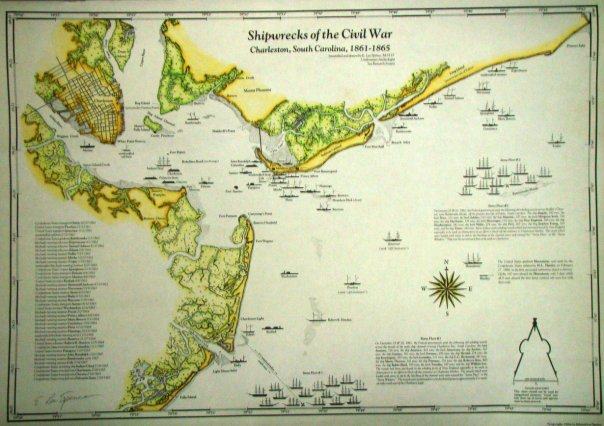
This decorative map, “Civil War Shipwrecks of Charleston South Carolina 1861-1865,” is one that Spence drew and first published in 1984. It correctly shows the relative position of the Hunley as off shore and east of the wreck of the Housatonic. That is important because its offshore location was unexpected and went against the historical record. In other words it was not a location that would have been deduced or guessed at from historical records. Like other historians, Spence knew from research that an offshore location was unlikely and would not have correctly shown its relative location if he had not already found both wrecks. Although not meant for navigational purposes, this map is additional proof that Spence found the Hunley long before the SCIAA/NUMA expedition dug it up in 1995.
Spence is a polymath, (which is an individual whose knowledge spans a substantial number of subjects, known to draw on complex bodies of knowledge to solve specific problems), and his academic achievements, his many shipwreck discoveries, his literary work and identification of the “real Rhett Butler”, his professional and popular publications, his plenary presentations before various conferences and civic groups, have been recognized in literally hundreds of ways and forms. Here are some that are especially meaningful to him.
Academy of Underwater Arts & Sciences: Awarded the 2012-2013 NOGI in Science for his pioneering work in underwater archaeology. The NOGI is the oldest and most distinguished, international award in diving. He later served for five years on the Academy’s Board of Directors.
National Geographic Society: Awarded honorarium in 2009 for consulting on shipwrecks for Sylvia Earle’s Ocean an Illustrated Atlas
Grunge.com: Spence was included in Grunge.com’s list of the ten “Most Notable Treasure Hunters in History.”
Intertel: On the 16th of January 1984, Spence, was accepted as a member of Intertel, which bills itself as “An International Society of the Intellectually Gifted.” Only half of the people who are eligible to join the better-known high-IQ society, Mensa, meet the minimum requirements to join Intertel.
 Mensa: Spence, who is a life-member of Mensa International, was included in Wikipedia’s list of “notable” Mensans. Mensa is the largest and oldest High-IQ society in the world.
Mensa: Spence, who is a life-member of Mensa International, was included in Wikipedia’s list of “notable” Mensans. Mensa is the largest and oldest High-IQ society in the world.
Montres Charmex SA: “Undersea Explorers Award” (Awarded in 2010 in part for Spence’s 1970 discovery of the wreck of the Hunley)
United States Army: “Honorable Discharge” (dated 21 February, 1967, i.e. Vietnam War era)
Articles by or about Spence and/or his projects have also been carried in foreign publications such as the Norwegian men’s magazine Vi Menn; the French magazine Tresors de l’histoire, the Sunday Express and the Sun, (both London, England); Sarnia Observer, newspaper, (Canada); La Stampa, newspaper, (Italy); Oggi (Italian equivalent of People magazine); Canadian Diving News magazine; International Journal of Nautical Archeology (Great Britain); MacCleans (“Canada’s Weekly Newsmagazine”); and in Heutzu (a major German magazine). This section is under construction, please check back.
Maclean’s (Canada’s Weekly News Magazine): “Riches from the lake bed”
The Sun (UK): “£600M Gold in Them That Holds” – Discovery of the steamer Central America
Der Standard (Austria): Goldrausch in der Tiefsee (Gold Rush in the Deep Sea)
OGGI (Italy): article about Lee Spence’s discovery that Rhett Butler was based on George Trenholm
Vi Menn (Norway): article by Spence [translated to Norwegian] on the salvage of millions in gold from the SS Central America
Metro (UK): online article by Jordan King on wreckage recovered from the sub Titan, which imploded while on dive to the Titanic
Besides major magazines like Life, People, U.S. News & World Report, Spence has had numerous articles by or about or crediting him and/or his work, that have appeared in various issues of such periodicals as Argosy (which was then the world’s largest men’s adventure magazine); Skin Diver (which for decades was the foremost magazine for divers); Gold Prospector, which bills itself as “the magazine of mining and adventure”; History Magazine; Atlantic Coastal Diver magazine; Treasure (the world’s largest treasure oriented magazine); Treasure World magazine; Treasure Search magazine; Treasure Diver magazine; Treasure Found magazine; Treasure Quest magazine; Islander magazine; Carolina Cruising magazine; Sandlapper magazine; National Diver magazine; ShipWrecks magazine; Wreck Diver newsletter; Millionaire magazine and the R.L. White Pages (both publications were published by Robert L. White, the founder of the Robb Report and both magazines catered to millionaires). Specific references will be given upon request. This is definitely an incomplete list.
Life: “The Search for Lost Treasures; 8 Great Mysteries of the Americas”
People magazine: “Yo-Ho-Ho and a Bottle of Mumm! Veteran Diver Lee Spence Toasts the Treasure of the Lost Wreck Regina” See article.
U.S. News & World Report: “The Hunley” — this article credits Spence as the first to find the wreck of the Hunley
Millionaire magazine: “The Vault”
History Magazine: “Raising the Hunley” — this article credits Spence with discovering the wreck in 1970
Argosy — Treasure Hunting ’77 Annual: with “Civil War Shipwrecks” article by Spence
Skin Diver: Articles about Spence and his work have been published in multiple issues of this magazine, which, although no longer published, covered the world of diving for decades.
Numerous articles written about (or including) Spence and/or his work have been picked up by AP, UPI and other wire services and have appeared in various issues of over a thousand newspapers. A very incomplete list includes USA Today (national); the New York Times (national); World Treasure News (national); Underwater USA (national); the Birmingham News (Birmingham, AL); the Mobile Register (Mobile, AL); the Montgomery Advertiser (Montgomery, AL); the Arizona Daily Star (Tucson, AZ); the Herald (Dublin, CA); the Los Angeles Times (Los Angeles, CA); the Los Angeles Herald (Los Angeles, CA); the Merced Sun-Star (Merced, CA); the Desert Sun (Palm Springs, CA); the West County Times (Pinole, CA); the Valley Times (Pleasanton, CA); the Record Searchlight (Redding, CA); the Sun (San Bernardino, CA); the Ventura County Star Free Press (Ventura, CA); the Contra Costa Times (Walnut Creek, CA); the News-Times (Danbury, CT); the Advocate (Stamford, CT); the Delaware State News (Dover, DE); the News Journal (Wilmington, DE); the Florida Times-Union (Jacksonville, FL); the Key West Citizen (Key West, FL); the Miami Herald (Miami, FL); the Tallahassee Democrat (Tallahassee, FL); the Vero Beach Press Journal (Vero Beach, FL); the Albany Sunday Herald (Albany, GA); the Athens Daily News (Athens, GA); the Banner-Herald (Athens, GA); the Atlanta Journal (Atlanta, GA); the Atlanta Constitution (Atlanta, GA); the Sunday Times Georgian (Carrollton, GA); the Daily Citizen-News (Dalton, GA); the Douglas County Sentinel (Douglasville, GA); the Times (Gainesville, GA); the Newnan Times-Herald (Newnan, GA); the Sunday Daily News (Lawrenceville, GA); the Macon Telegraph and News (Macon, GA); the Daily Sun (Warner Robbins, GA); the Chicago Sun Times (Chicago, IL); the Republic (Columbus, IN); the News-Sentinel (Fort Wayne, IN); the Muncie Star (Muncie, IN); the Boston Globe (Boston, MA); the Sun (Lowell, MA); the Ellsworth American (Ellsworth, ME); the Portland Press Herald (Portland, ME); the Detroit News (Detroit, MI); the Detroit Free Press (Detroit, MI); the Kalamazoo Gazette (Kalamazoo, MI); the Oakland Sunday Magazine (Oakland, MI); the Times Herald (Port Huron, MI); the Sanilac County News (Port Sanilac, MI); the Diving Times (Royal Oak, MI); the Charlotte Observer (Charlotte, NC); the Gaston Gazette (Gastonia, NC); the High Point Enterprise (High Point, NC); the Star-Herald (Scottsbluff, NE); the Courier-News (Ridgewater, NJ); the Buffalo News (Buffalo, NY); the Newark Star Ledger (Newark, NY); the Syracuse Herald Journal (Syracuse, NY); the Columbus Dispatch (Columbus, OH); the Daily Oklahoman (Oklahoma City, OK); the Portland Oragonian (Portland, OR); the Public Opinion (Chambersburg, PA); the Erie Morning News (Erie, PA); the Tribune Review (Greensburg, PA); the Daily News PM (Philadelphia, PA); the News (Philadelphia, PA); the Pocono Record (Stroudsburg, PA); the News and Courier (Charleston, SC); the Evening Post (Charleston, SC); the Gamecock (Columbia, SC); the State (Columbia, SC); the Columbia Record (Columbia, SC); the State (Columbia, SC); the Greenville Piedmont (Greenville, SC); the Island Packet (Hilton Head Island, SC); Moultrie News (Mt. Pleasant, SC); the Times Democrat (Orangeburg, SC); the Dallas Times (Dallas, TX); the Houston Chronicle (Houston, TX); and the Journal Times (Racine, WI).
The Epoch Times: “Unburying Treasures: Cartographer Finds Hidden Treasure – How maps help save sunken ships”
CNBC: “Diving Into Sunken-Treasure Investing”
LoveMoney.com — America’s luckiest-ever treasure hunters Dr. Spence is shown here with Mel Fisher. They are draped with an eight foot long gold chain found on the Atocha. Both men were in this list of America’s ten luckiest treasure hunters.
X-Ray magazine (Danish online magazine, published in English): “U.S. Civil War Wreck: H.L. Hunley Submarine” by Brian Chamberlain, who credits Spence as discoverer of the wreck
VICE magazine: “Meet the Adventurer Who found Hundreds of Millions Worth of Sunken Treasure“ Vice described Spence as “a pioneer in the field of underwater archaeology, a world-renowned treasure hunter, and just about as close to an actual living, breathing Nathan Drake as you’re ever going to find.”
Spence has been the driving force behind a number of shipwreck salvage companies and has put together quite a few prospectuses and research packets for specific projects. Because they usually contain confidential and proprietary information, they are never intended for general distribution or publication. Depending on the project, these documents can run into the hundreds of pages. Here are just a few that Spence has prepared.
Golden Eagle Research Packet: This packet contained Dr. Spence’s original research and theories in support of his joint venture on the 1865 wreck of the SS Republic with Seahawk Deep Ocean Technologies Inc. Seahawk, in violation of their signed confidentiality agreement, transferred a copy of this document to Odyssey Marine Exploration Inc., which salvaged the wreck, without Spence’s foreknowledge and required authorization. “Golden Eagle” was simply Spence’s code name for the SS Republic.
Proprietary Information, Shipwreck Expeditions LP: Confidential prospectus by Dr. Spence for a shipwreck expedition to be done in the name of Shipwreck Expeditions LP, off the coast of South Carolina.
Appendix (to Shipwreck Expeditions LP’s prospectus): “With an overview of the Partnership, its Objectives and People,” prepared by Dr. Spence in support of his prospectus for a proposed shipwreck expedition to be done in the name of Shipwreck Expeditions LP, off the coast of South Carolina.
Fisher Research Laboratories Advertisement — Dr. Spence with Underwater Metal Detector
As early as 1971, Spence’s work was already being supported in part by major corporations. Spence’s 1971 “Constance Expedition” (a salvage project on the wrecked Civil War blockade runner Constance Decimer conducted as a joint venture between Spence’s South Carolina corporation, Artifacts Inc., and a California corporation called Fathom Expeditions Inc.). Corporate sponsors of the project included Rolex Watch Company, Toyota, Mercury Motors, McKee Craft, Barringer Research, Taylor Tool Company, Bendix, Allis-Chalmers and Gulf Oil. The educational research foundation Sea Research Society was formed during this expedition and was officially chartered the following year.
In 2014, the award-winning “BumGenius” cloth diaper company contacted Spence and asked if they could name their newly designed pirate treasure print pattern after him. They explained that all of their print designs were named after geniuses, and he was both an expert on treasure and a member of Mensa. He thought it was hilarious, but quickly agreed. He even helped promote it at no charge. See: https://www.bumgenius.com/collections/spence
In 2012, Spence entered into separate agreements to endorse Minelab’s “Excalibur II” underwater metal detector and Pharobit’s underwater LED flashlight and digital video recorder with GPS (GCF-200).
When Life Magazine published its March 1987, cover story on treasure hunting, Time-Life’s public relations section asked Spence to help promote that issue of the magazine and arranged various TV and radio interviews. Spence ended up doing a series of interviews on Time-Life’s behalf (including live appearances on such programs as NBC television’s Today Show and Talknet radio’s Owen Spann Show).
Spence has performed paid product endorsement for Seagram’s Classic Wines in relation to bottles of G.H. Mumm Champagne recovered from the wreck of the Canadian steamer Regina. The title of the November 16, 1987, People magazine article on Spence was Ho Ho Hum and a Bottle of Mumm and the three page article also included a half-page picture of Spence pouring a magnum of new Mumm’s Champagne (with the label of it and other bottles clearly showing). Spence was also able to mention G.H. Mumm Champagne by name during numerous live and taped interviews for radio and television. See: Dr. Spence in People magazine, which Spence did at the request of Time-Life’s public relations department.
Spence’s picture and endorsement has been used in the paid advertising of Fisher Research Laboratories (manufacturers of metal detectors) with ads being published in a number of magazines. Spence has also endorsed Fisher products while being interviewed on TV and radio, and has managed to get photos and mentions of Fisher metal detectors in various articles about Spence’s work. See: Fisher’s advertisement with Spence.
Spence’s name has been used in advertising (magazine ads and direct mail) paid for by Freedom Marine, Ltd., to promote the sale of artifacts and to enhance the overall prestige of the company. Spence appeared on radio and television interviews arranged by Freedom Marine to increase public recognition of Freedom Marine. For examples see full-page ads placed by Freedom Marine in Treasure (January, 1988); Treasure Found (Spring, 1988); Treasure Search (March/April, 1988).
Spence arranged for Edge™ diving computers to be supplied to Freedom Marine Ltd. by Orca Industries and succeeded in mentioning the computers by name on various radio interviews and in explaining the importance of the computers as pertains to safety and productivity. Their products were mentioned by Spence in numerous live interviews including several on the J.P. McCarthy Show (WJR, Detroit, MI), which is the largest single market radio show in North America. Orca’s products were also written up in various magazine and newspaper articles resulting from interviews with Spence.
In 1983 White’s Electronics Inc., at Spence’s request, provided metal detectors to use in conjunction with his “Shipwrecks of South Carolina and Georgia Shipwrecks Project,” which was sponsored in part by the National Endowment of the Humanities, the South Carolina Committee for the Humanities, the Savannah Ships of the Sea Museum, and the College of Charleston. The State of South Carolina subsequently distributed thousands of flyers at the various South Carolina tourist welcome centers, telling of the project. The flyers mentioned White’s Metal Detectors by name. The detectors were also mentioned in various articles and books, which resulted from the project.
Shipwreck Press Inc., and Shipwreck Consultants Inc., (both of which were solely owned by Spence) made extensive use of Spence’s credentials in their paid advertising {For examples of full page ads see Daily Variety (1988 Anniversary Issue); Hollywood Reporter (1988 Anniversary Issue); Low Country News (Volume 7, issue 51); and Seafarers: Journal of Maritime Heritage (Volume 1). Smaller ads have also appeared in various issues of Daily Variety, Hollywood Reporter, California Diver, Florida SCUBA News, Underwater USA, etc.
Spence was a founder, owner and editor for Narwhal Press Inc. (based in Miami, Florida, and Charleston, South Carolina), which published a wide variety of paperback and hardcover books ranging from reference books and histories to novels and law-books, even a training manual for the CIA. The following are some of the books he personally edited and/or did the layout and cover art.
Tempest, Fire & Foe: Destroyer Escorts in World War II and the men Who Manned Them, by Lewis M. Andrews, Jr. — Published by Narwhal Press Inc., 1999
Merchant Marine Days: My Life in World War II, by David LaMont Lee — Published by Narwhal Press Inc., 1998
Crippled Eagle: A Historical Perspective of U.S. Special Operations 1976-1996, by Rod Lenahan — Published by Narwhal Press Inc., 1998
Stealth Down, by Ross Simpson — The first combat loss of an F-117 Stealth Fighter in combat and the dramatic rescue of its pilot, published by Narwhal Press Inc., 2003
Judgment Call — A Matt Berkley novel, published by Narwhal Press Inc.
Death’s Bright Angel — A Matt Berkley novel, published by Narwhal Press Inc.
IMPORTANT NOTE: Spence has never endorsed any product, which he did not actually use or which he did not truly feel deserved endorsement. In fact, Spence has turned down opportunities to endorse some items simply because he felt their quality was inferior to or indistinguishable from competing products. The following products and/or corporations have been favorably mentioned by Spence in published articles and/or during radio or television interviews without remuneration of any type: magnetometers and underwater metal detectors by JW Fishers Mfg. Inc.; side scan sonar by Klein Associates Inc.; rubber boats by Avon and Zodiac; service by Delta airlines; and beverages such as Dewar’s Scotch; and Veuve Clicquot Champagne. Spence has also used his ability to reach the public through the news media to inform the public of inferior products (ranging from balky autos to awkward drysuits) and/or aggravating service (ranging from that provided by hotel staff to that not provided by public officials). And, just as important, Spence, as a consultant, frequently makes direct product recommendations (ranging from compressors to computers, and boats to lift bags) when clients are outfitting expeditions and/or offices and/or laboratories. Furthermore, when making such a recommendation for a client, Spence passes any rebate or “free” equipment received by him from the manufacturer (as a result of such recommendation) on to the client so there will not be a conflict of interest.
Discussion
-
Underwater Archaeologist Dr. E. Lee Spence « Shipwrecks.com September 21, 2013
-
Wreck of the SS United States(built in 1865, lost in 1881) « Shipwrecks.com August 10, 2013
-
AnnaBeta June 12, 2013
-
free run April 25, 2013
-
Dr. E. Lee Spence, Underwater Archaeologist « Shipwrecks.com April 14, 2013

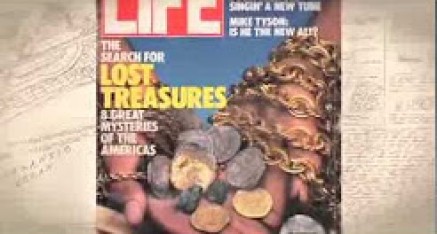
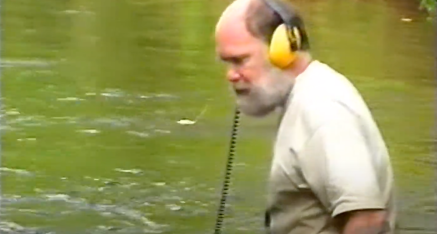
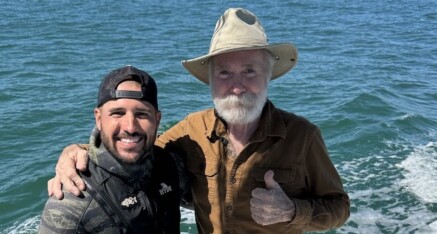
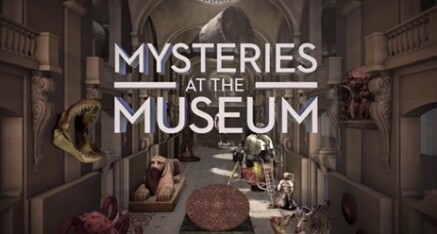
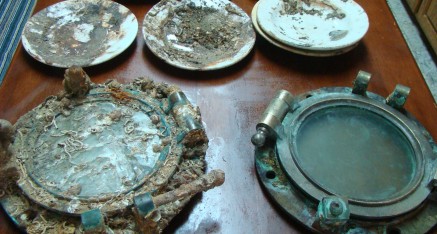
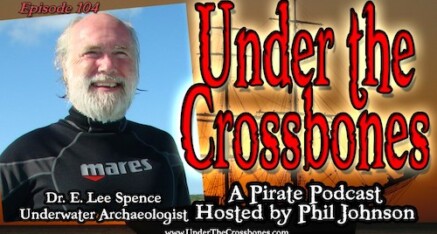

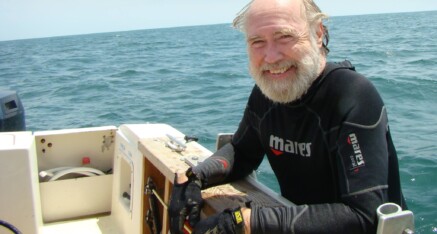

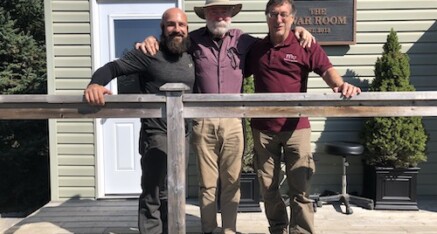
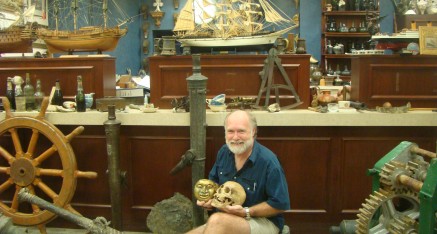
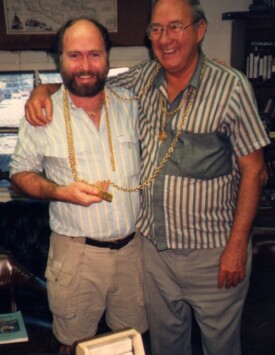
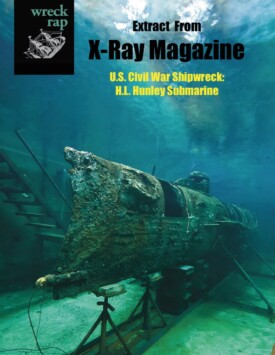
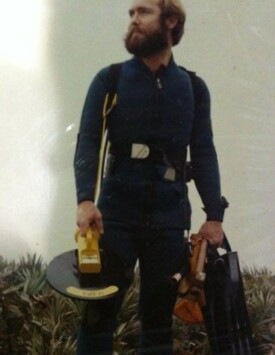
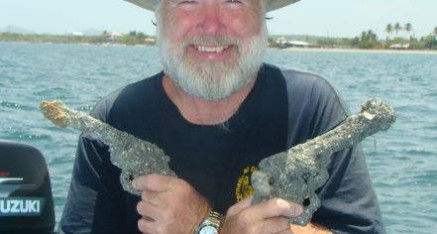

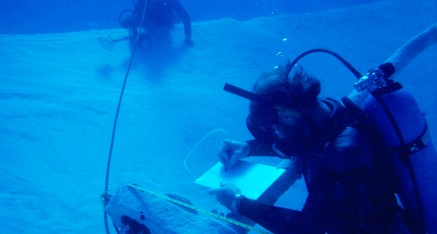
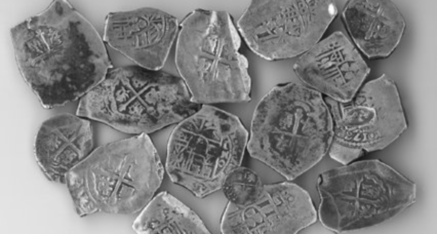
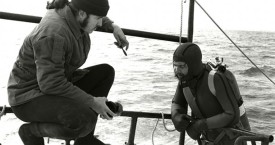
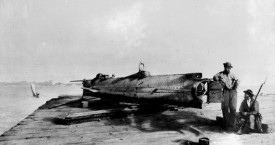
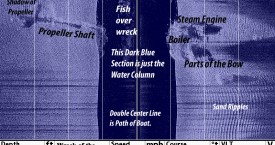
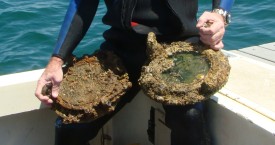
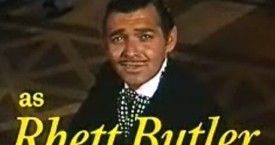
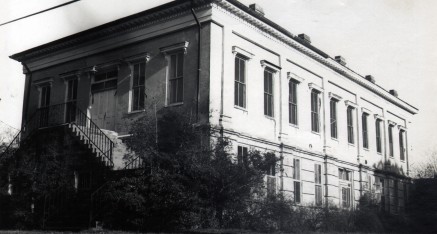
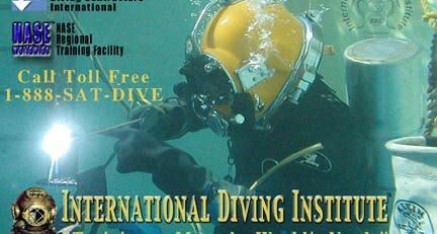
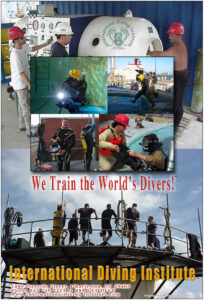
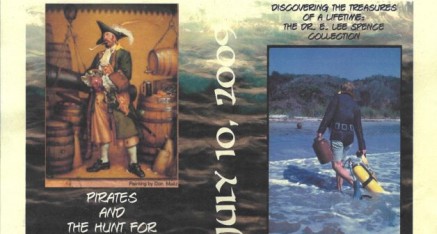
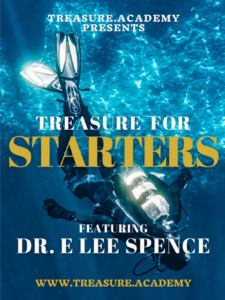
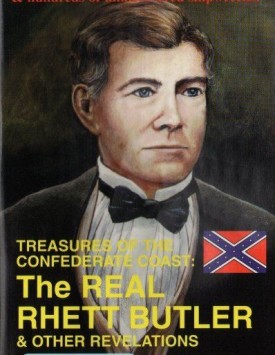
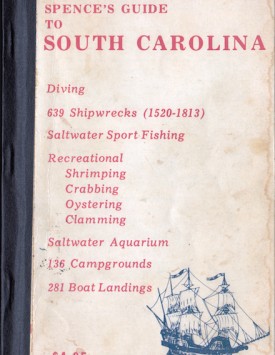
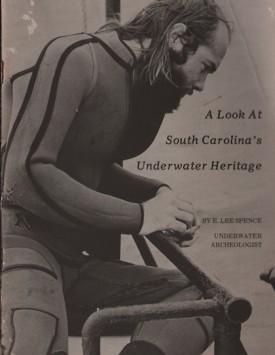
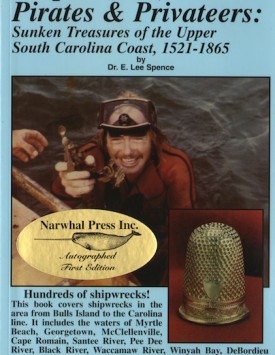
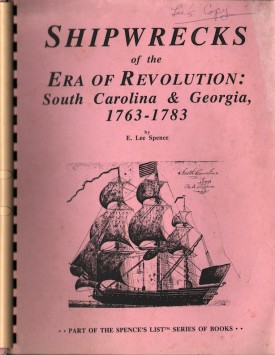
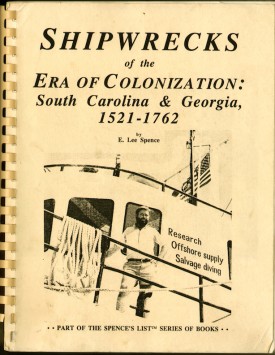
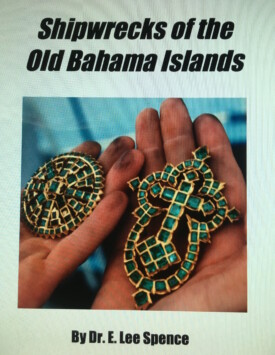
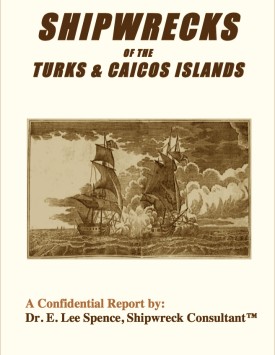
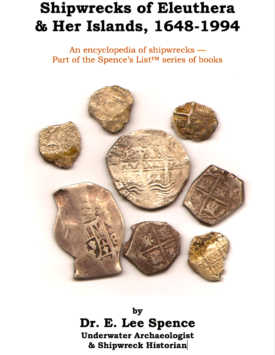
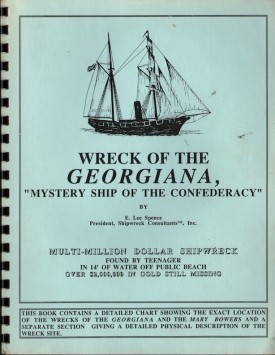
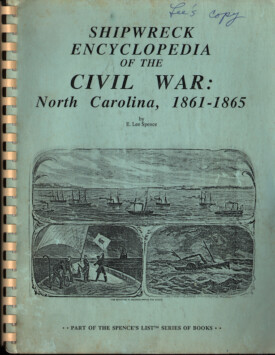
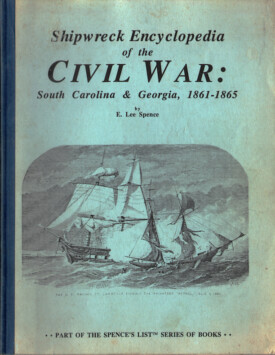
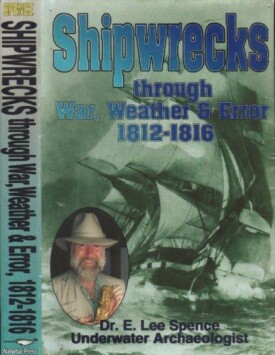

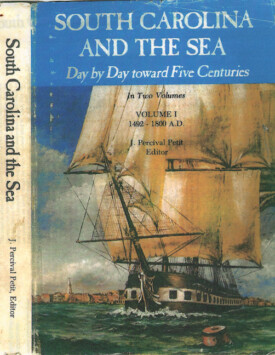
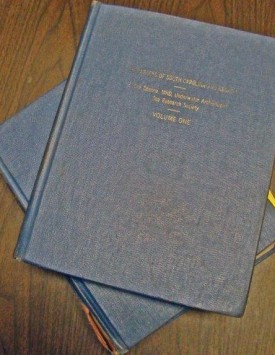
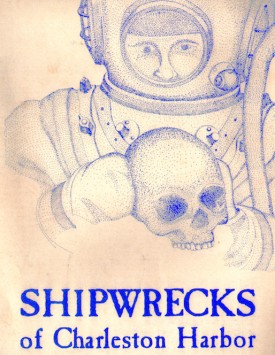



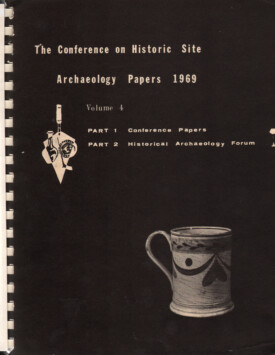 Georgiana/Mary Bowers dual shipwreck site.' />
Georgiana/Mary Bowers dual shipwreck site.' />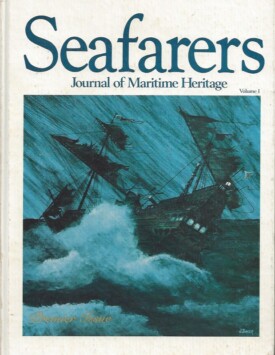
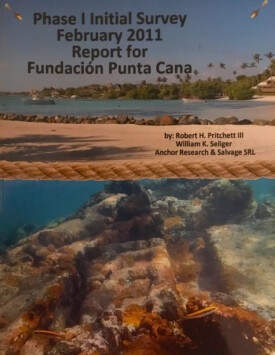
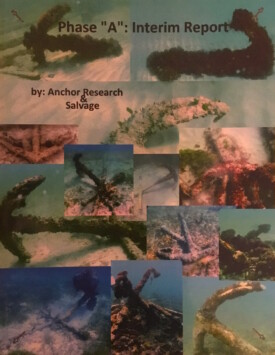

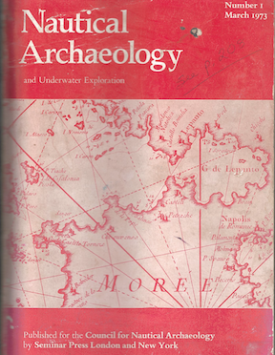
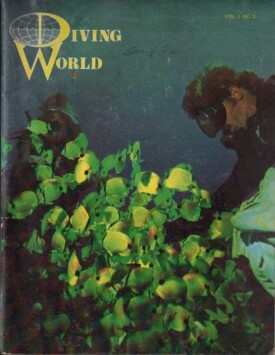



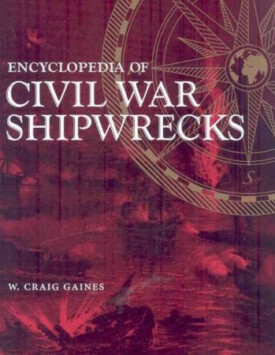
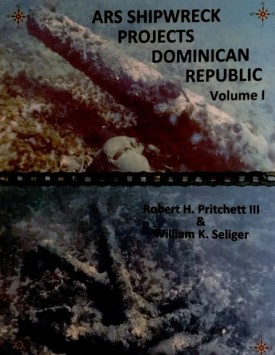
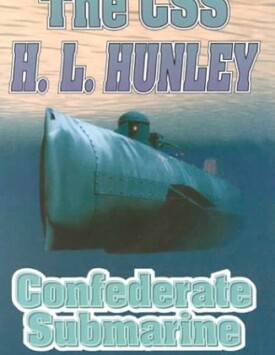
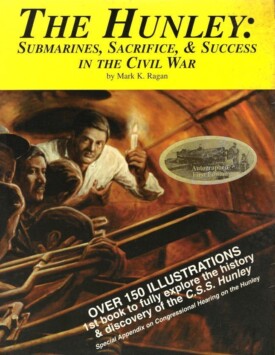
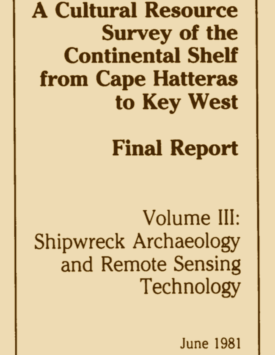

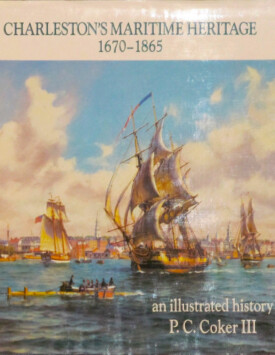
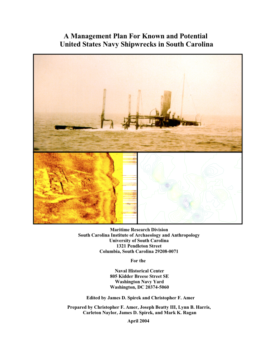

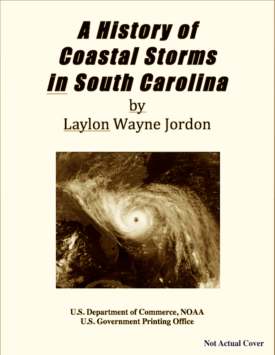
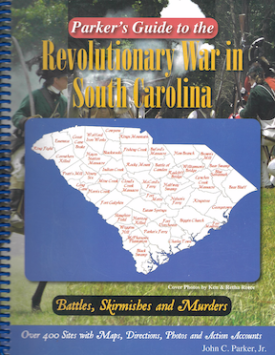 .' />
.' />
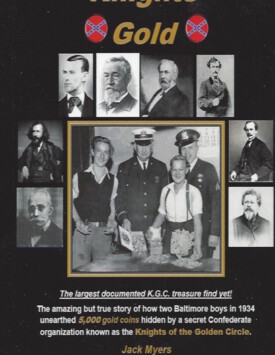
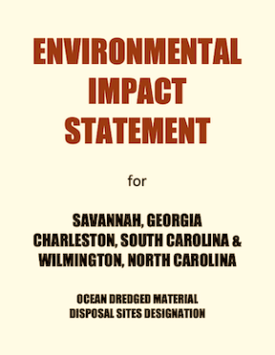
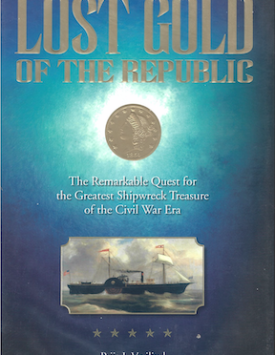
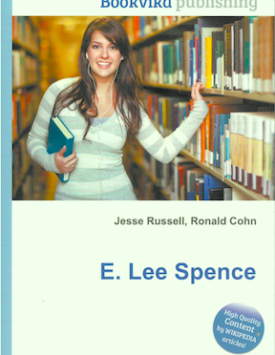
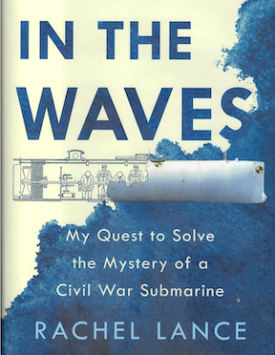
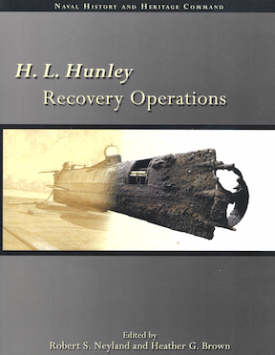
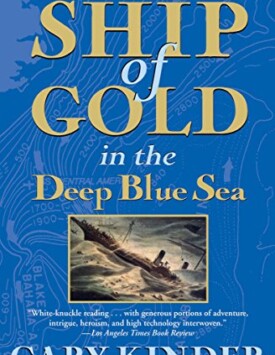
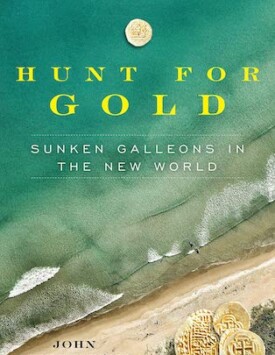
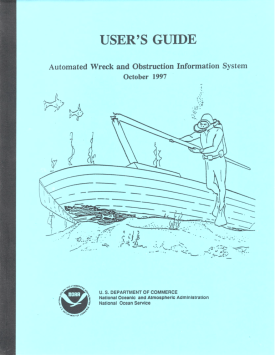 utomated Wreck and Obstruction Information Service.' />
utomated Wreck and Obstruction Information Service.' />